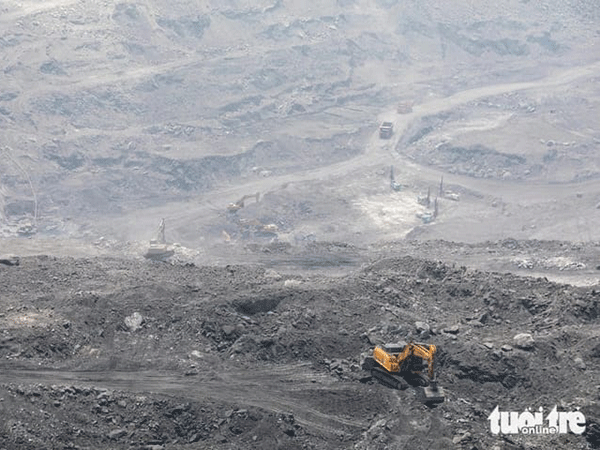Vietnam approves 6km conveyor belt
to transport coal from Laos
Authorities in Quang Tri province, Vietnam, have approved the construction of an over-six-kilometre-long conveyor belt to transport coal from Laos, the Tuoi Tre News website reported on July 1.
 |
| A coal mine in Xekong province. --Photo Tuoi Tre News |
The conveyor belt will cover 23.8 hectares of land and is estimated to cost about US$58.3 million or VND1.5 trillion.
The belt was deemed necessary because roads that are currently used to transport coal have become degraded and are no longer suitable for this purpose.
The conveyor belt will carry 30 million metric tons of coal a year. The supply of coal from Laos to Vietnam will bolster the country’s energy security until 2030. Use of the conveyor belt for the transport of coal will ease the pressure on customs officials at the La Lay border crossing and on National Highway 15D.
The conveyor belt will start at the Laos-Vietnam border and end at a warehouse in A Ngo commune, Dakrong district, Quang Tri province.
Over the past two years, coal imports from Laos into Vietnam have grown, with the coal being cleared through customs at the border crossing between Dakrong district and Saravan province in Laos.
Nearly 4,000 metric tons of coal passes through the La Lay border crossing daily. The amount can surge to 12,000 metric tons of coal, equivalent to 400-450 trucks transporting coal, if there are no traffic hold-ups.
In 2023, Quang Tri province imported 2.2 million metric tons of coal from Laos.
A recent surge in the number of trucks carrying coal from Laos to Vietnam has overwhelmed the border crossing, leading to the degradation of National Highways 15D and 9, as well as the Ho Chi Minh Road.
In addition to the 6km conveyor belt, the investor in the project proposes to build two more belts, with one connecting the former with My Thuy Seaport and the other linking the Vietnam-Laos border and a coal mine in Xekong province.
The three conveyor belts are expected to create a conveyor system with a total length of 160 kilometres.
By Times Reporters
(Latest Update July 4, 2024)
|


